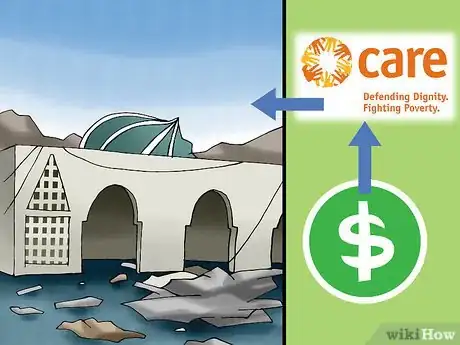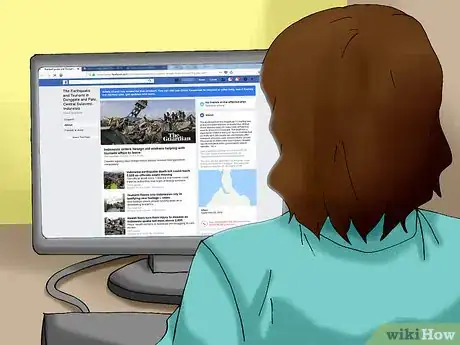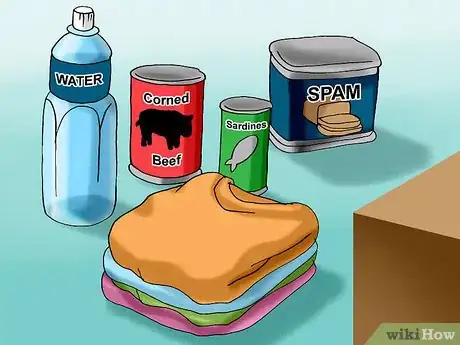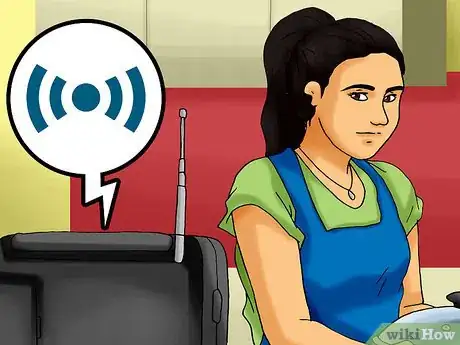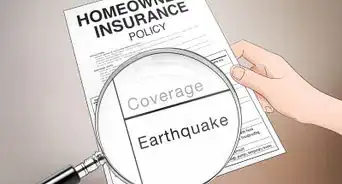This article was co-authored by Direct Relief. Direct Relief is an award-winning humanitarian aid organization, active in all 50 states and more than 80 countries. They focus on helping people affected by emergencies and natural disasters. Direct Relief has been highly rated by Charity Navigator, GuideStar, and the Center for High Impact Philanthropy at University of Pennsylvania, for their effectiveness, efficiency, and transparency.
This article has been viewed 24,408 times.
On September 28, 2018, a 7.5-magnitude earthquake struck the Indonesian island of Sulawesi, bringing down buildings and causing a destructive 20-foot tsunami. The two disasters have devastated the cities of Palu and Donggala, killing at least 1,234 people and displacing over 60,000 survivors with little access to food, shelter, and clean water.[1] Aid organizations are working to bring relief to the island, and you can help by making donations and keeping up to date on new developments. No matter how much or little you can give, every effort and donation make a difference.
Steps
Donating Money
-
1Donate to general aid associations to help areas in the most need. Donating money to aid organizations is the best way to help recovery efforts on Sulawesi. Giving to general relief organizations like the Red Cross will ensure that your donation will go to the people and areas most in need.[2]
General Donation Sites
The Indonesian Red Cross, the Red Cross branch based in the country to provide disaster relief and other aid services.
Public Good, which distributes your donation between 15 organizations, including Americares, the International Red Cross, and Mercy Corps.
Direct Relief, which is working to send funds and medical supplies and assistance to help survivors in Indonesia.
Global Giving, which raises funds and distributes them to local aid organizations and first responders in Indonesia.
Oxfam, a global aid organization dedicated to fighting poverty and homelessness.
Americares, a U.S.-based crisis relief organization focused on meeting urgent health needs and giving long-term aid.
-
2Give to CARE to help victims in the remote Donggala area. The aid organization CARE is focusing their efforts on the more difficult areas to reach, such as Donggala. This region, just north of Palu, was the closest to the epicenter of the earthquake, but is least likely to get the amount of assistance needed. CARE plans to send response teams to the area and distribute emergency shelters and sanitation supplies, among other things.
- To donate and learn more, go to: https://www.care.org/
Advertisement -
3Help survivors with serious injuries and disabilities through Humanity and Inclusion. The U.S.-based Humanity & Inclusion is a nonprofit organization that promotes disability rights. They're currently accepting donations for aid and rehabilitation care for survivors in Indonesia with serious injuries and disabilities, focusing on helping these victims regain strength and independence.[3]
- Donate here: https://www.hi-us.org/donate
-
4Help the youngest victims by donating to Save the Children or UNICEF. According to one estimate, at least 600,000 children have been affected by the earthquake and tsunami. Beyond struggling with physical and psychological trauma, many children have been orphaned or separated from their families, or are struggling to get basic necessities like clean water and shelter. To help, you can donate to an organization focusing on helping these youngest victims.[4]
To help children affected by the earthquake and tsunami:
Donate to Save the Children at https://support.savethechildren.org/site/Donation2?df_id=2761&2761.donation=form1.
Donate to UNICEF Indonesia at https://donate.unicefusa.org/page/contribute/indonesia-earthquake?_ga=2.176976741.159877599.1538596532-378837417.1538596532.
Donate to World Vision Indonesia at https://donate.worldvision.org/give/indonesia-earthquake.
-
5Use social media to donate quickly. Sites like Google and Facebook offer quick ways to donate if you aren't able to give to a specific organization. Google “how to help in Indonesia” and scroll down until you see a “Donate” box. Click the blue “Yes, Donate” button to make your contribution.
- To donate via Facebook, go to its Crisis Response Page for the disaster. Scroll down and click “Donate” in the box labeled “Donate to Relief Efforts.” To get to the page, click here: https://www.facebook.com/crisisresponse/alindau-sulawesi-tengah-indonesia-earthquake-oct02-2018/about/?source=bookmark.
-
6Only give to legitimate, reputable charities. Unfortunately, some people take advantage of large-scale crises and solicit donations at scam charity websites. Do a little research and only donate to a charity with a proven track record of success, verified by outside news sources. You should also make sure that the organization you're giving to is a registered public 501(c)(3).[5]
- You can also run the charity's name through Charity Navigator, which ranks charities based on their transparency, accountability, and financial health. The closer the charity's grade to 100, the better. Go to https://www.charitynavigator.org/ to check a charity on the site.
Helping in Other Ways
-
1See if any organizations need items like food or clean water. Sending money is usually the most effective way to help in the aftermath of a disaster, since donations of other items, like food or water, can be misplaced or take longer to reach victims. If you do want to give these essential supplies, check in with various aid organizations, like the Red Cross or Oxfam, to see what supplies they need the most and where to send them.[6]
- Necessary items usually include canned or dry food, bottled water, clothing, and blankets.
- You can check the organization's website or give them a call to see what you can donate.
-
2Get in touch with organizations to help in-person if you're in Indonesia. In-person volunteers are helpful in the aftermath of a disaster, although aid organizations typically use the trained volunteers they already have on the ground. If you have search-and-rescue experience and are already close to the affected area, though, you can still offer your help. Call an organization that's planning in-person relief efforts in the area, tell them of any relevant experience you have, and ask what you can do to help.
- The organization might turn you down, but you can still help by donating money or necessary items.
-
3Check Google and Facebook to help find missing persons. If you're searching for someone who's gone missing after the disaster or trying to reconnect families, go to Google's Person Finder or check Facebook's Crisis Response Page. You can look for a particular person, check lists of people who have already marked themselves as safe, or learn more information from people on the ground in the area.[7]
- To use Google's Person Finder, go to https://google.org/personfinder/2018-palu-tsunami/?lang=id.
- To see Facebook's Crisis Response Page, go to https://www.facebook.com/crisisresponse/alindau-sulawesi-tengah-indonesia-earthquake-oct02-2018/about/?source=bookmark.
-
4Stay up to date on recovery efforts and needs in the long-term. Donations to aid organizations are often high right after a major disaster but decrease once media coverage goes down, even when help is still needed. The fallout from Indonesia's earthquake and tsunami is immense, and the number of people killed, injured, and displaced rises every day. The recovery effort will take a long time, and organizations will need your assistance through it all.[8]
- Continue checking in with different charities to see if they're still raising money. Consider giving on a weekly or monthly basis, if you can.
- If you want to volunteer in-person, sign up with an organization now and specify that you want to help the recovery in Indonesia. You might not be able to help in the first search-and-rescue efforts, but could get a chance later on as areas start to rebuild.
-
5Join the Red Cross or another aid organization to help in future disasters. Registering as a volunteer for an aid organization now might not let you help in Indonesia, since most organizations require training that takes some time. Don't let that discourage you, though. If you're passionate about making a difference in-person, signing up now means your help might be used in a disaster in the future.
- To register as a volunteer for the Red Cross, go to https://www.redcross.org/volunteer/volunteer-opportunities/disaster-volunteer.html.
- If you want to volunteer with another organization, check their website to learn about the process.
References
- ↑ https://www.nytimes.com/2018/10/01/world/asia/tsunami-indonesia.html
- ↑ https://www.npr.org/2018/10/02/653670566/how-to-help-after-indonesias-earthquake-and-tsunami
- ↑ https://www.nytimes.com/2018/10/02/reader-center/donate-indonesia-tsunami-earthquake-victims.html
- ↑ https://www.npr.org/2018/10/02/653670566/how-to-help-after-indonesias-earthquake-and-tsunami
- ↑ https://www.charitynavigator.org/index.cfm?bay=content.view&cpid=310
- ↑ https://www.nytimes.com/2018/10/02/reader-center/donate-indonesia-tsunami-earthquake-victims.html
- ↑ https://www.npr.org/2018/10/02/653670566/how-to-help-after-indonesias-earthquake-and-tsunami
- ↑ https://mashable.com/article/indonesia-earthquake-tsunami-how-to-help-victims/#O3NIkZlC0sqs
About This Article
The best way to help victims of the earthquake and tsunami in Indonesia is to donate money. Go to aid organization websites, such as the Indonesian Red Cross, Public Good, Oxfam, and Americares, to make a general donation to relief efforts. You can also donate to especially vulnerable communities, like children or disabled people, by giving to organizations like UNICEF and Humanity & Inclusion. Long-term recovery may take years, so continue to check with charities and give on a regular basis if you can. Read on to learn how to give items in need and volunteer in-person.

